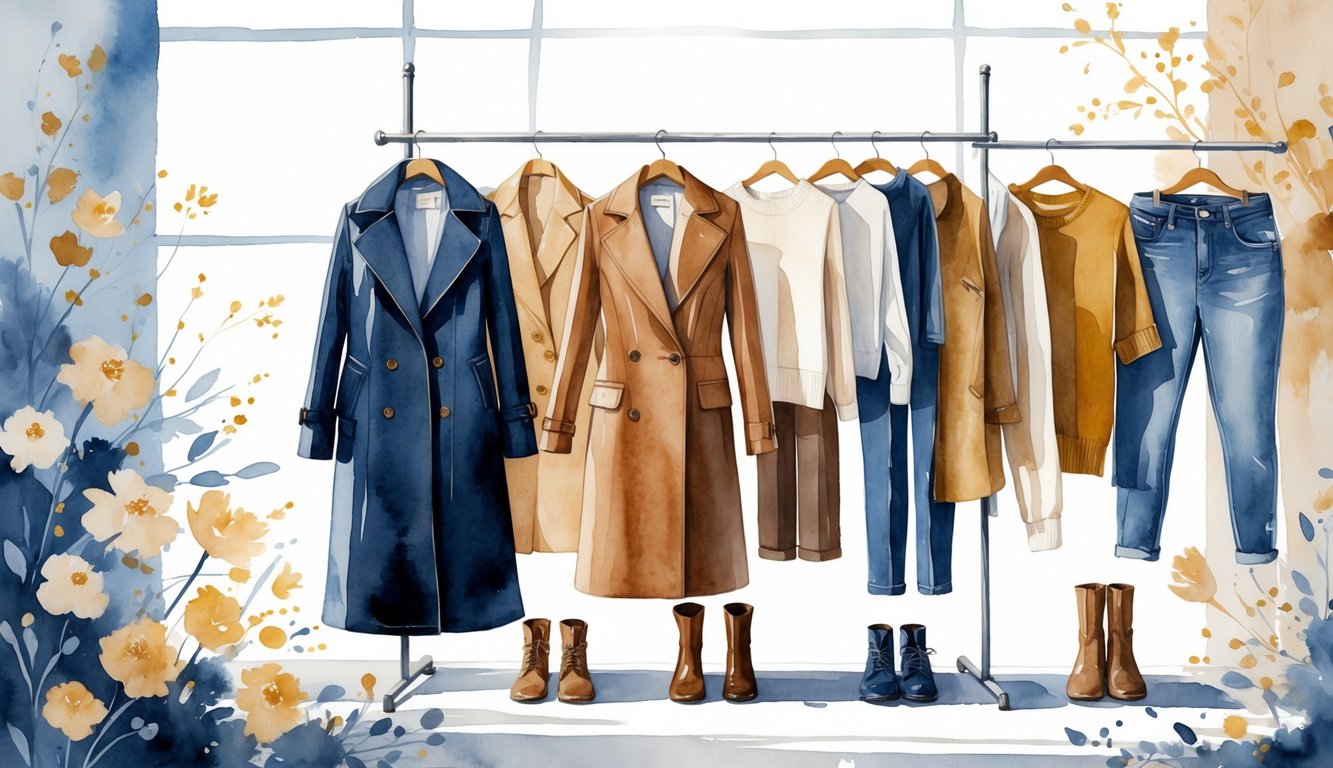
Leading Brands and Designer Influence
I try not to trip over the flood of “must-have” basics, but lately, high-priced investment pieces are everywhere. Not just sticking around—actually overtaking fast fashion in a way that feels kind of stubborn. Balenciaga used to just haunt my social feed (and, fine, my wishlist), but now it’s all over buyer stats and resale charts.
Balenciaga and Luxury Investment Choices
Weird thing—I don’t even love every new Balenciaga thing, but people scoop up those bags and giant jackets like they’re essentials, not splurges. Some London stylist told me over gross coffee, “Clients want Hourglass Bags and Triple S sneakers as insurance,” like these are shields against fast fashion regret.
Is it really a shock? Sales for certain luxury brands—Me+Em, for example—jumped 46% in one year. People are ditching cheap basics for classic, high-value investment pieces. Still, I can’t figure out why my dry cleaning bill for silk never drops, but everyone keeps buying pricier stuff for durability and resale. Fashion trends circle endlessly, but when street photographers stop asking about knockoffs and want to know who made your coat, you know something’s shifted.
Globalization and The Clothing Trade
I still can’t get over how every analyst missed Iceland’s oddly specific impact on global wardrobe trends. It’s not just chunky sweaters and glacier blue everything. I’m scrolling through sales numbers, watching designer staples move while basics rot in shipping containers, and then there’s this weird overlap with national parks—no one predicted that.
International Demand and the Role of Iceland
First off, it’s never just fast fashion versus fancy stuff. It’s a tangled mess: Reykjavik designers making artisan wool hats, and suddenly, double-digit growth in Nordic-inspired pieces. Sure, fast fashion spreads through massive supply chains, but when global fashion trade hits $1.7 trillion (thanks, McKinsey), even tiny players like Iceland matter. Regional quirks get amplified. A handful of Icelandic studios—just ask Yrsa Sigurðardóttir, who swears she can’t keep up with custom cloak requests—are fueling the “investment piece” hype. Sometimes I wish Zara could fake hand-felted wool, but then supply chain folks would lose their minds over import delays and export drama.
When I called around Reykjavik, store buyers didn’t moan about trends. They’re drowning in weird shipments, customs holdups, and American retailers scrambling to show off “authentic” Icelandic brands. If global demand used to be predictable, now it’s chaos: Paris wants volcanic-hued blazers, New York influencers fight over limited-edition sweaters. Supply chain headaches are constant, but buyers keep saying Iceland’s not just a side note—it’s the surprise lead in this never-ending global fashion drama.
Impact on National Parks
National parks—actual wild places, not just pretty backgrounds for Instagram—always end up in the weirdest crossfire when it comes to clothing waste. I mean, am I the only one who remembers that Þingvellir park manager’s rant about the mountain of lost mittens and abandoned scarves? Tourists show up, drop their cheap jackets for the sake of a selfie, and then just bounce. It’s not like anyone’s tracking the cost of picking up last season’s polyester leftovers, but rangers sure do. Last summer, one ranger told me they spent weeks just hauling synthetic junk with global chain tags out of the bushes. Who thinks about microplastics when they’re chasing a sunset shot? Not the people leaving their windbreakers behind.
Iceland’s parks, weirdly, barely report any of this. Is it because people there actually value their stuff, or is it just that everything’s too expensive to toss? I can’t figure it out. Meanwhile, industry folks keep muttering about “reputational risk” and “long-term cleanup,” but honestly, nobody’s doing the math on how much cashmere saves the planet. It’s just park staff and volunteers stuck with all the dirty work, and I’m pretty sure they’re not getting overtime.
Fashion in Literature and Media
People act like the “capsule wardrobe” is some new invention, but writers have been obsessed with clothing details forever—sometimes to the point of ridiculousness. I’ve lost count of how many times I’ve tripped over a random dress description in a novel when I’m just trying to figure out a basic plot point. And don’t even get me started on the copyright mess when it comes to digital publishing and vintage fashion references. It’s a headache. No one ever tells you how much time you’ll waste chasing down whether you can legally use a photo of a 1920s dress.
Public Domain Works on Fashion
You ever get stuck reading Mrs. Dalloway just for the green dress references? Because I have, and so have a million grad students. Public domain novels are basically a goldmine for fashion nerds—Dickens’s giant coats, Gatsby’s pink suit, Wilde’s silk lapels. Every professor seems to think Edith Wharton and Virginia Woolf invented the concept of a “statement piece.” Orlando pops up at fashion panels now, which is just… wild.
The public domain is kind of a free-for-all. Everyone borrows the same lines about “elegant” coats and mixes them into lookbooks or runway shows. It’s like a never-ending remix, and nobody’s getting sued. Suddenly, you’ll see a brand do a collection inspired by Jane Eyre’s muddy boots. Why not? If you want to see how deep this rabbit hole goes, here’s a link. I’m not even pretending to keep up anymore.
Ebooks and Copyright Laws in Fashion Publishing
Why do ebook publishers act like every designer interview is top-secret? Copyright law, apparently. It’s like carrying around a tiny, annoying clutch purse—necessary, but always in the way. If you even think about dropping a Givenchy photo into your ebook, lawyers start circling. I’ve seen authors yank whole illustrations at the last minute because nobody wants to fight with Chanel’s legal team. (And you can forget about using a Chanel logo. Ever.)
Old-school brands lock down their archives, so digital “fashion guides” end up with these ugly, copyright-safe graphics. It’s not pretty, but at least nobody’s getting sued. Copyright terms just keep getting longer—Mickey Mouse is still locked up, so is anything Dior. That’s why so many fashion ebooks look like they were designed by someone who hates pictures. If you want to read up on this never-ending legal headache, here’s a decent roundup. Good luck making sense of it.



